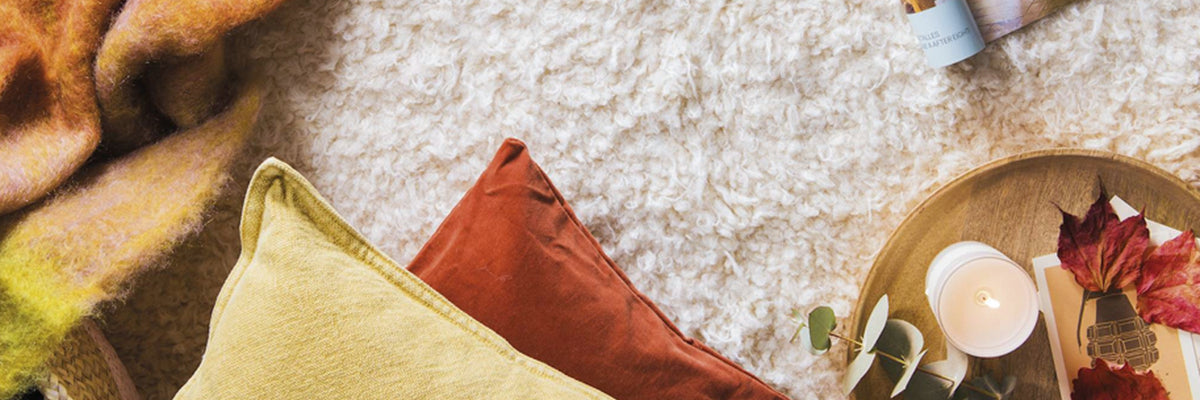- Regular Price
- $ 19.99
- Sale Price
- $ 19.99
- Regular Price
- $ 19.99
- Unit Price
- per

Mixing textures and fibers sounds complicated, but it really is simple. Of course, as long as it fits the place, one's own style and comforts.
The textures go beyond the structure of the fabric, in fact it complements quite well with the accessories, walls and materials that are added to the interior of a space.
Imagine untreated wood, walls with small sponge stains to give roughness, corrugated cotton or canvas to create that rustic and cozy place.

Illustration 1: Wall texture.
In textiles, textures are achieved from fabrics, structures, type of threads, thickness, fringes, prints or fiber composition.
These have many functions, both aesthetic and visual, since they not only provide volume and sensations to the touch, they also achieve subtle changes in tone, richer, less flat colors. For example, fabrics such as microfibers, velvets, corduroys or chenille cause a different color to be seen from a certain perspective when moving and even the brightness changes.
Textures can influence how we perceive a place, since it may seem cozy, soft and modern or cold, fresh, rustic. For example, if you add a crochet knit rug made of wool, cotton or acrylic, it will be a comfortable, trendy, warm, hospitable and pleasant space.
On the other hand, if you incorporate a structured fabric rug, jute or any natural fiber with a lot of texture and a little rough into a room, you will get the opposite, that is, it will be a cool area, it is not warm, it is not as pleasant to the touch because its rigidity, but it does not stain and absorb liquids like other types of compositions.

Illustration 2: Textile texture.
That is why it is important to play with them, so that a good complement is reached. Furthermore, each area has a very clear intention, it all depends on its concept.
To choose the appropriate texture, consider the activities that will be carried out in it, as well as a study, playroom, rest, living indoors or outdoors, who will use the room the most: the children at play, the whole the family outside, only adults and how constant the cleaning of the surfaces should be, in the case of the kitchen and it should be easy to clean and constant.

Illustration 3: Texture in the room.
Now, below we will mention some locations and what type of textures would suit them best.
For a study or office we recommend soft, light textures and neutral colors so that the books stand out. Skins, leather, smooth and treated dark woods will go well in the place.
For a child's bedroom or playroom, it is essential to find fabrics with textures that are easy to wash or even have a stain-resistant finish. These should be eye-catching, such as the shapes of animals, letters or flowers. The colors should be bold and colorful.
On the other hand, in the living room, irregular figures such as geometric ceramic pieces, rustic wood textures or some walls with a natural stone finish, velvets go perfectly with the atmosphere of hospitality and warmth that we want to offer to visitors.
As for the compositions, take a risk! Don't be afraid, don't limit yourself to playing with the different and varied textile fibers found on the market.
You can use both natural and artificial and synthetic ones. It can be mixing a linen and a polyester or using a polypropylene that has a silky appearance.
Did you like or find this information useful?
Author | Jimena Chavez
"This information is for reference only, to obtain precise details about the use, qualities and care of our products, it is necessary to consult directly with your seller before making a purchase or receiving recommendations."
0 comments